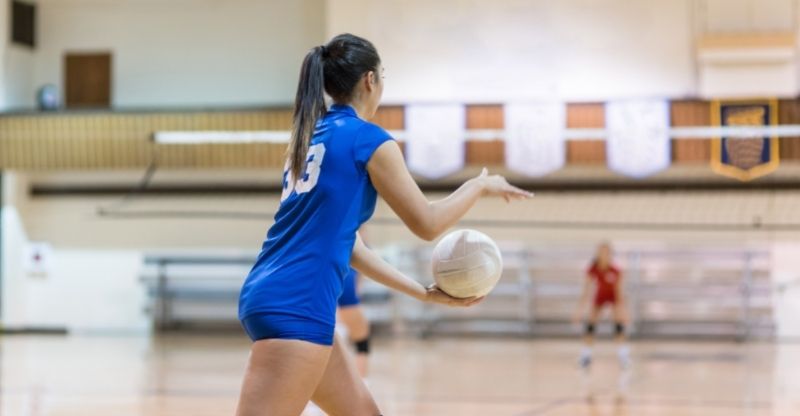Aces in volleyball are incredibly exciting and give a huge boost of confidence to the serving player.
So, what is an ace in volleyball? An ace in volleyball is when the serve directly results in a point for the serving team. This can happen in several ways, but the most well-known is the no-touch ace, where the ball lands within bounds without the opposing team touching it. Additionally, any other serve that is unreturned may also be counted as an ace.
Aces change the flow of the game, encourage your team, and demoralize the opposition.
They help increase leads and shorten gaps, and basically count as a “free point” for the serving team since the ball never returned over the net.
With dedicated practice and a focused mind, you can raise your ace percentage and become an essential server for your team.
In this article, I’ll be discussing everything “ace”, including:
- What counts as an ace (and what DOES NOT)
- Tips for serving more aces
- Examples of amazing aces at the pro level
What Does An Ace Mean In Volleyball?
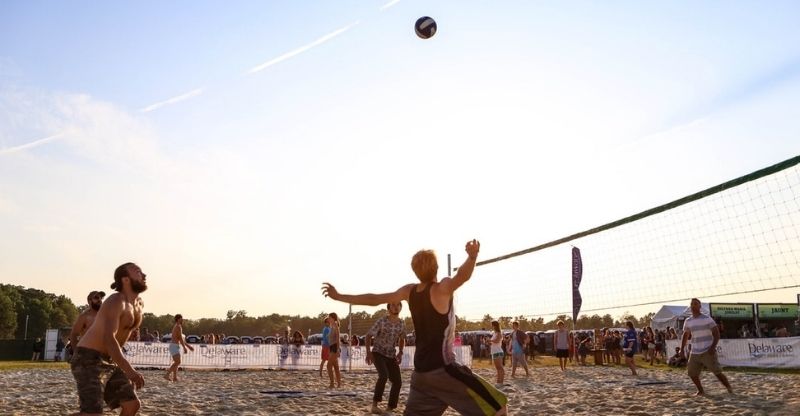
An ace in volleyball is when the ball served by one team is unreturned by the other team, resulting in an immediate point. While there are many ways for this to happen, the most known example is of the ball landing inside the court without the other team touching it.
The serve is the only time in volleyball that a player stands alone, but it’s also the only opportunity to score completely on one’s own ability. This is very impressive and exciting, and a great accomplishment for the individual player.
However, the term “ace” can also mean something else in volleyball. An “ace” can also refer to the best hitter/primary scorer on a volleyball team – “the Ace”. The ace is usually the outside hitter, but can be anyone on court who the setter trusts to set the ball to in a tough situation.
While different teams may disagree on the “requirements” to become the ace, standard level demands that the ace should be regularly able to beat two blockers by himself.
The rest of this article will be dedicated to discussing the serving “ace”, but if you want to learn more about different spikes and how to become your team’s ace, check out this article on different types of spiking in volleyball.
Related Article: What Type of Position Should I Play In Volleyball?
What Counts As An Ace In Volleyball? Two Common Types
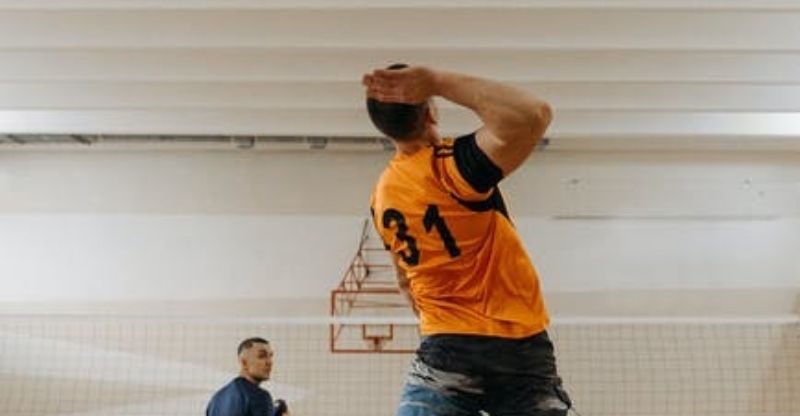
An ace in volleyball is a surprisingly broad term, but it can be broken into two types: (1) a no-touch ace and (2) a regular ace.
1. No Touch Ace
The no-touch ace is simpler to define.
It is the classic idea of an ace – the ball is served and touches the opponent’s side of the court without any player contacting it.
This can be done either through float serving, underhand, or topspin, but is most commonly seen in matches with float serves that drift back into bounds.
2. A Regular Ace
A regular ace encompasses every other type of ace.
This includes any situation where the serve directly results in a point or is unreturned by the other team. This can happen in a couple of different ways.
- First, the receiving player is unable to pass and bounces the ball out of bounds, into the ground, or into the net. This also includes if the pass crosses the net and lands out of bounds on the server’s side – it’s still an ace! This ends the point and awards it to the server.
- Second, the serve counts as an ace if the referee calls a rule violation on the receiving player. This includes lifts and double hits and may change depending on the referee each game. For instance, if the serve hits the receiver’s arms and chest, most referees would not call a double. But if the player passed the ball to themselves, that would count as a double and result in an ace.
A “Return Ace”: What Does This Mean?
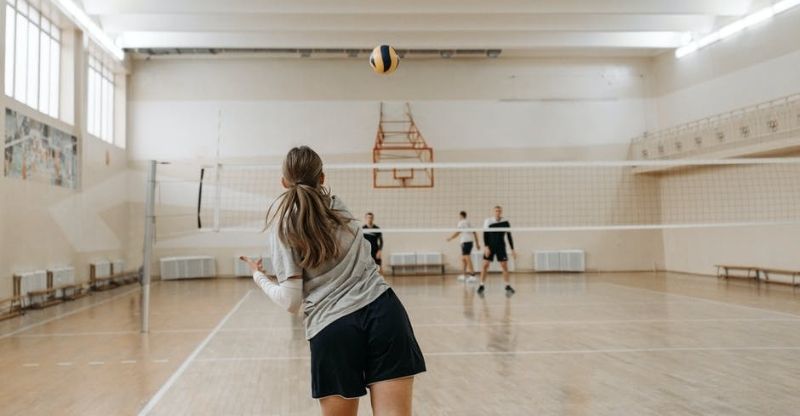
A little-known type of ace in volleyball is the “return ace”.
This happens when the receiver returns the ball immediately back over the net, resulting in a point.
This kind of ace is almost never used and rarely (if ever) acknowledged, since passing to one’s teammates and setting up a spike has a much higher probability of scoring.
Still, the unexpectedness can catch teams off guard, and return aces can sometimes be good strategies at lower levels of play.
The return ace has a little more usage in beach volleyball since there are only two players on the court instead of six, but is used only in specific circumstances to score or change the pace of the game.
What Does NOT Count As An Ace in Volleyball?
Although commonly mistaken for an ace, a rotational fault does not count as an ace.
A rotational fault occurs when one team is out of the rotation when the serve begins.
The referee will immediately blow the whistle and stop the game, awarding a point to the opposing team.
Due to the nuances of this rule and the action of serving, spectators are sometimes ignorant of what happened and contribute the point to an ace. This is not the case.
An unreturned ball that has more than one touch is also not technically counted as an ace, despite fulfilling the requirements of resulting in a point.
This is due to the opposing team’s errors rather than the server’s skill, as after the first touch the server no longer has an influence on the ball.
Needless to say, any point that returns the ball back across the net or results in a point for the receiving team also does not count as an ace in volleyball.
How Often Do Aces Occur In A Volleyball Match?
Aces in volleyball occur more often than you think. On average at the university level, there are about 3-5 aces per set, totaling around 15 average per match.
This number is actually higher at lower levels and lower at higher levels.
- Because the passing skill, reach, and experience is much lower at the middle school and high school levels, aces are more common and usually sit somewhere between 5-10 per set, for a total of 25 average per match.
- At the pro level, aces are a little lower than the university level, at a rate of 2-3 per set. This number is largely dependent on the player serving and the teams they face, as positioning and strategy play a key factor here.
4 Tips For Improving At Serving Aces
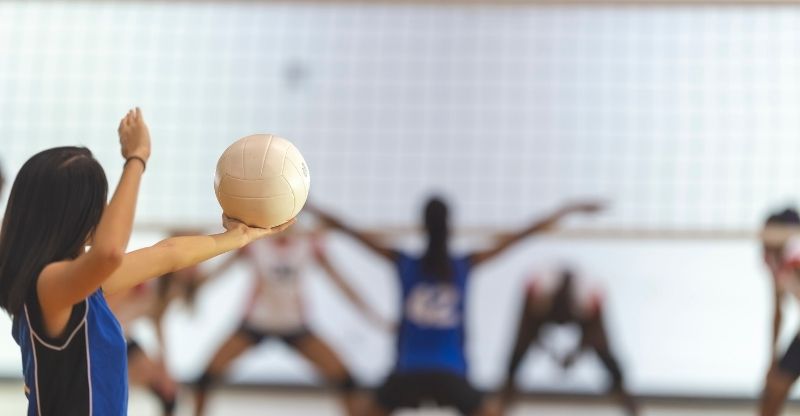
Aces feel amazing to get, and are a validation of the hard work and skills that players have practiced over their volleyball journey.
More than this, it also gives your team a free point and a small chance to rest without working towards the win, while putting pressure on the opposing team.
While you can’t guarantee an ace, there are things you can do to improve your odds of scoring one.
Here are my top four tips to improving your ace in volleyball:
- Aim for the edges
- Target weak passers
- Mix up the serve
- Practice
1. Aim For the Edges
Aiming for the edges of the court will make your serve deadlier and harder to receive, forcing defenders to make the tough decision of whether to pass it or risk calling it out. The downside to this is that if your serve is not accurate, you are likely to lose more points than you score by serving the ball out.
Train yourself by targeting the first foot within the boundary lines and set up cones so you can see your progress.
Float serves and topspin serves will change the trajectory of your serve and alter how the ball travels, so be mindful of the differences as you practice.
Remember, float serves’ strength is in their deception: the more they move the trickier they are to pass. Topspin’s strength is in its speed: the faster it moves, the more challenging the receive. When aiming for the edges, select your most accurate serve and utilize it to its fullest.
2. Target Weak Passers
Targeting weak passers is a surefire way to build pressure on the opposing team and to rack up a few aces while doing it.
Find the weakest link on the opposing team by probing your serves, and once found target them as much as possible, making your serves as challenging as able. The continued pressure by you and their falling pride in themselves will cause their pass to deteriorate and award you an ace.
This tactic may seem mean, but it is simply the result of common sense. A good coach will stop your aces by shuffling the team or substituting the player before things get out of hand, and the player themselves may be the solution by passing your serve.
Choose your targets carefully and serve well, and hopefully, your aces will start rolling in.
3. Mix Up the Serve
Predictability is the death of success, at least in volleyball. Mix up your serve by targeting different players, making it shorter or longer, and changing from float to topspin as you feel confident.
While mixing things up too much can negatively affect your serving rhythm, keeping things unpredictable will keep the opposing team on edge and your chances of scoring an ace high.
For a simple tactic in mixing up the serve, I recommend alternating from a deep float to a short float serve, aiming for the seams between players.
Often after your first serve, the team will call out “deep” or “short” to prepare for the next serve, so doing the opposite may catch them off guard.
4. Practice
Lastly, there’s no better method to improving your ace ratio than to practice.
Spend a significant amount of time serving, with a serious focus on your rhythm and technique.
While it is normal for most teams to goof around during serving practice, take it seriously and pick your targets carefully. Once achieved, move on to the next, and return to your goals before using them in a game.
A little improvement each day will add up in the long run, and transform your serves from free balls into cannons. And really, there’s nothing quite like the satisfaction of scoring an ace.
My Top 3 Examples Of Volleyball Aces
1. Ivan Zaytsev: Italy vs USA 2014
Maybe the most famous series of aces in volleyball history, Ivan Zaytsev achieved a monumental comeback for Italy in the 2014 World League Finals by scoring four aces in a row. This secured the set for Italy from behind and won them the match.
The aces here show the power and presence of a good serve and the effect it can have on not only the teams but the match as a whole. Mental toughness and killer technique combined to make Zaytsev unstoppable as he scored both no-touch aces and normals.
Zaytsev utilized aiming for the edges of the court to score most of these aces – beating both the USA libero and other experienced members of the squad.
2. Yuji Nishida: Japan vs Canada 2019
A textbook example of excellent serving from Yuji Nishida of Japan, this video shows his six aces in a row against Canada in the 2019 World Cup.
Nishida utilizes his perfect technique practiced over the years as well as pinpoint accuracy to target weak passers on Canada’s lineup. As a left-handed hitter, unusual areas of the court were opened up to him to target which he took full advantage of to collect a string of aces.
The key takeaways from Nishida’s aces are his accuracy and angles. This, more than his power or height, was enough to award him these aces and win Japan the match.
3. Kyle Russell: V-League 2022
Last but not least, we have the great Kyle Russell scoring a staggering eight aces in a row while playing for Daejeon Samsung Bluefangs. This set a new record within the Korean V-League and is a stellar demonstration of a powerful serve. While not achieved at the same level of competition as our other examples (international), it is impressive nonetheless.
While Zaytsev aimed for edges and Nishida targeted players, both other examples on this list utilized their accuracy to succeed. Russell is different, however, for prioritizing power over everything – though his accuracy also came into play.
A powerful serve can be incredibly difficult to receive and terrifying for some players to come up against. It is inspiring, builds hype, and feels amazing when it lands. This clip by Kyle Russell captures that perfectly and is a great example to watch the impact one’s serve can have on the game.
Frequently Asked Questions
How Many Points Is An Ace Worth In Volleyball?
An ace is worth one point in volleyball. Just like other methods of scoring, an ace awards only a single point to the serving team. There is currently no method to score more than one point at a time in volleyball, and the ace follows these rules.
Who Earns The Ace In Volleyball?
The server and their team earns the ace in volleyball and the accompanying point. The server themselves is awarded the ace credit, which contributes to their ace percentage and serving record for that season.
What Is A Good Ace Percentage In Volleyball?
The average ace percentage in volleyball is around 7% of a player’s serving record, while the best servers on a team are between 8-10%. This was calculated from a list of the top 25 USA collegiate teams and the “Sweet 16” using the NCAA box scoring system.
For reference, a 7% ace percentage roughly calculates to one ace every fifteen serves. For a team, that means that you should be averaging 1.5 aces per set, or 2 to stay ahead of the curve. If that doesn’t sound like your team, it’s time to get practicing.
